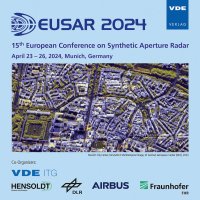In-orbit Demonstration of FPGA-based SAR Imaging Processor for Small Satellite
Konferenz: EUSAR 2024 - 15th European Conference on Synthetic Aperture Radar
23.04.2024-26.04.2024 in Munich, Germany
Tagungsband: EUSAR 2024
Seiten: 4Sprache: EnglischTyp: PDF
Autoren:
Sugawara, Keisuke; Ozawa, Satoru; Nohmi, Hitoshi; Kujubu, Osamu; Miyawaki, Masanori; Uetsuhara, Masahiko; Fukai, Yusuke; Takahira, Ryosuke
Inhalt:
We developed an onboard SAR imaging processor designed for small satellite named FLIP (Fast L1 Processor). FLIP has a capability of performing L1 processing and imaging. Its mass is 1.3[kg] and size is 190×165×57.8[mm] and those specification is enough to install a small satellite. From the perspective of power consumption and radiation-resistance, we implemented it into FPGA (Field Programmable Gate Array). Chirp scaling algorithm was adopted as SAR imaging algorithm because it is relatively simple compared to other algorithms. An onboard computer that is external of FLIP calculates parameters needed for SAR imaging process, and FLIP receives them and perform imaging process by using input raw SAR data. Environment resistance design such as thermal design and radiation-resistant design is considered, and their test is conducted for harsh in-orbit environment. As thermal design, a thermal interface sheet is between the FPGA and the case of FLIP so that the heat flows through the sheet to the case, and to the satellite structure. We applied three radiation countermeasures. A product with resistance to total dose effect was used, the power supply is shut down when overcurrent is detected by a current sensor as a countermeasure for SEL (Single Event Latch-up), and SEU (Single Event Upset) occurrence is handled by reprocessing in operation and scrubbing function. FLIP was installed to iQPS's AMATERU-III satellite and it was launched. As the first stage of evaluation, we demonstrated imaging the raw SAR data that had been stored on the onboard memory in advance. The image was compressed as JPEG and downlinked. The amount of data downlinked to the ground was about 0.0845% of raw data. Additionally, the actual SAR data acquired by AMATERU-III was also imaged by FLIP and successfully compressed and downlinked. By reducing downlink time with data size reduction, we achieved shorting the time from observation to providing images to users.


